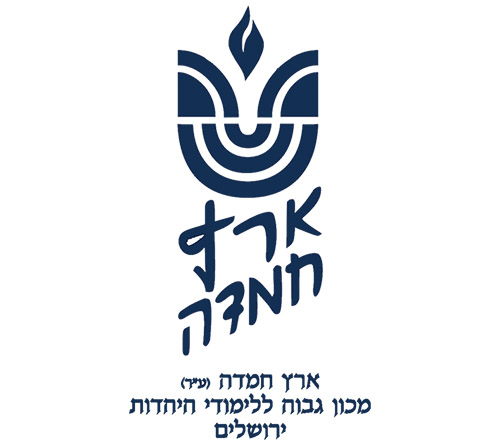
Question: What is the operative result of the concept of “kol haposhet yad notnim lo” (whoever extends his hand to receive is given)?
Answer: There is little discussion in the poskim on “kol haposhet yad notnim lo,” but two sources in Chazal touch on it. The Tosefta (Megillah 1:5, cited in Bava Metzia 78b)—in discussing that money earmarked for Purim should be used for it—says that we are not madekdek (exact) in the matter; it does not explain what that means practically. The Yerushalmi (Megillah 1:4) says we are not madekdek on the mitzvot (Ritva, Bava Metzia ibid.—money) of Purim. It adds, “but rather kol haposhet yad notnim lo.” The Shulchan Aruch (Orach Chayim 694:3) codifies these words in the siman that discusses matanot l’evyonim.
Rashi (Bava Metzia 78b) says that the case discussed there is a gabbai tzedakah who collected money to be used by the city’s poor for seudat Purim. If the Yerushalmi and Shulchan Aruch also refer to that, it is unclear if matanot l’evyonim is a halacha of matanot l’evyonim.
Specifically, the sources imply that the public collection was in addition to people’s personal practice of matanot l’evyonim. The fund was a form of public tzedaka, which we find for example regarding making sure the poor have wine for the seder (Pesachim 99b) or ma’ot chitim. Accordingly, the gabbai of these funds is instructed to give to whomever requests it.
What need is there for a special collection for the Purim seuda of the poor if that is the main purpose of matanot l’evyonim (see Mishna Berura 694:2); wouldn’t all the townspeople’s matanot l’evyonim suffice for one meal for them? There are a few possibilities: 1) According to many, a mere peruta suffices for matanot l’evyonim (see ibid.), so that the poor might not have received from matanot l’evyonim enough for a nice meal; 2) The poor person has the right for a fancy meal that even average matanot l’evyonim will not cover (Bava Metzia 78b may imply this; see Ramban ad loc.); 3) For various reasons, some evyonim (poor people) will not receive, so the gabbai ensures all have enough.
Some understand “kol haposhet yad notnim lo” as relating to matanot l’evyonim. The Ramban (ibid.) says that in light of “kol haposhet yad notnim lo,” there is a minhag (mentioned by the Shulchan Aruch ibid.) to give on Purim even to non-Jews. The Beit Yosef (Orach Chayim 694) cites objectors to this idea, since matanot l’evyonim is supposed to go to Jews (all agree that tzedakah money may go to non-Jews—see Gittin 61a). This (from the Shulchan Aruch’s author) implies that “kol haposhet yad notnim lo” can be relied on to fulfill matanot l’evyonim. The Ritva (Bava Metzia ibid.) explains that we need not be exact and ensure that the intended recipients of matanot l’evyonim (the poor) receive, because the spirit of the day is to funnel happiness into giving, with one’s intention to include the poor—but that anyone who claims to fit suffices. (There is significant machloket as to who is included in the intended evyon (poor person)).
According to this approach, “kol haposhet yad notnim lo” is a leniency—one does not have to be certain the recipients are as needy as designed (Mikrei Kodesh (Harari) 11:3). Dirshu (594:16) claims there is a machloket between Rav Elyashiv (stringent) and Rav Chaim Kanievsky as to whether this is true. There is also an approach that willingness to embarrass oneself and request defines one as an evyon (see Moadim U’zmanim VI:106).
Some view “kol haposhet yad notnim lo” as a stringency—one may not refuse to give Purim provisions to any poor person who asks for it (see Kol Meiheical VI, page 328). But, what if one already fulfilled the allotment of two evyonim? Possibly, while at that point, it is only recommended to look for more poor recipients (Mishna Berura 694:3), it could be obligatory upon request. Alternatively, it is not matanot la’evyonim, but a mitzvah of tzedaka. It is never simple to refuse to give tzedaka (Devarim 15:7), but, presumably, this stringency means that even in cases one does not have to give (as much) (see Shulchan Aruch, Yoreh Deah 249:1; ibid. 251:10), one should do so on Purim (the degree is unclear).
To summarize, “kol haposhet yad notnim lo” is either: a leniency that one may give matanot l’evyonim to anyone who claims to qualify, instructions for Purim to the gabbaim of tzedaka or individual tzedaka givers or an extension of the minimum matanot l’evyonim obligation.
This column is written by Rabbi Daniel Mann on behalf of the Eretz Hemdah Institute in Jerusalem, which trains dayanim and has many projects on behalf of Klal Yisrael, including its Ask the Rabbi service in conjunction with the OU. Rabbi Mann is a Dayan at Eretz Hemdah, a senior member of the Ask the Rabbi project, and author of its Living the Halachic Process series. He is also a Ram at Yeshiva University’s Gruss Kollel in Israel.












